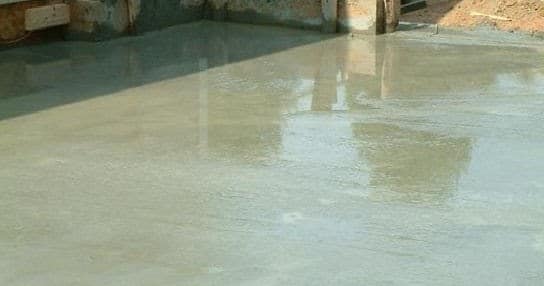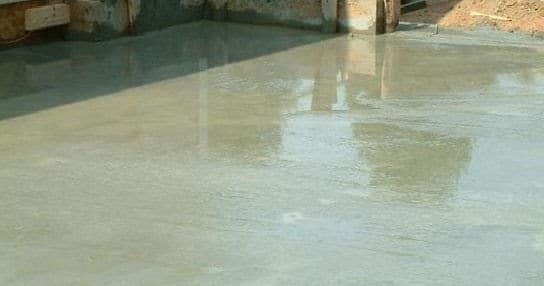For the civil engineer involved in the planning of in-situ concrete and prefabricated structures, knowledge of the properties of concrete is essential.
Why should we know the properties?
A designer dealing with structural projects must be aware of the behavior of concrete under various conditions. For example, consider grade 40 raw concrete being poured for a 1000mm thick slab foundation.
- If there is a large area, we cannot do Concrete in one go. We have to do several pours.
- As concrete hardens (during the hydration process), the core temperature increases and it is necessary to limit this to avoid thermal wear and delayed ettringite formation.
- The thermal gradient and temperature difference must be maintained within acceptable limits.
If the civil engineer is not fully aware of the above factors, serious problems may arise. Therefore, we need to pay attention to the behavior of concrete.
The following articles published on this website will help you gain more knowledge about concrete in addition to the information discussed in the article.
- A detailed study of concrete (from scratch)
- All about concrete (the most important things in short)
- Things to Consider When Building Concrete
Let's take a look at the important properties of concrete. There may be different categorizations of the following method.
- Physical properties
- Thermal properties
- durability
- Fire resistance
Let's discuss each property in detail.
Physical properties
These are mainly the general properties of concrete that we normally observe. There are many areas we can discuss. However, we will limit this discussion to the most important properties of concrete that we need to know.
density
The density of concrete depends on the composition of the mix, or put another way: the composition of the mix determines the density of the concrete. Thus, we can specify the density of the concrete.
In general, the density of concrete is in the range of 24 -25 kN/m 3 .
porosity
Concrete is a porous material. Absorbs water. There are cavities in the concrete that you can't see.
The greater the porosity, the greater the water absorption.
The porosity of concrete has advantages and disadvantages.
For example, openings allow water to penetrate the concrete. This increases the strength and durability of the concrete.
Covering one of the concrete is very important in the Durability of concrete If the development of strength in this area is sufficient, the structure will be more durable than a structure without sufficient strength.
Impact resistance
Concrete subjected to wear and other forces must be durable and undamaged.
Furthermore, the sensor must be able to withstand shock loads.
Concrete limited by reinforcement has significantly greater resistance to this type of load.
Concrete strength
Concrete strength can be discussed under different terms.
- Compressive strength
The compressive strength of concrete is the most important parameter taken into consideration during construction planning. We usually call this in construction Characteristic Strength of Concrete .
There are many factors that affect the strength of concrete, as discussed in the article Key Factors Affecting the Strength of Concrete .
We indicate the characteristic resistance in the projects. The contractor must produce the same concrete. There are methods, compliance criteria and tests to ensure that the compressive strength specified by the designer is achieved on site.
The following articles explain the assessment of compressive strength and its technical context.
-
- Concrete Compressive Strength and Concrete Testing
- Assess the compressive strength of the structure on site
- Tensile strength of concrete
The tensile strength of concrete is generally not taken into account in the static design of reinforced concrete structures.
However, on special occasions, we check the tensile strength and get used to it in the project.
For example, in prestressed structures Tensile strength of concrete is considered a design parameter. This happens with different pricing approaches.
In a normal structure, the tensile strength of concrete is not taken into account given the possibility of flexural cracks forming.
Modulus of elasticity of concrete
Basically we base ourselves on the values specified in the standards.
These values vary depending on the quality of the concrete.
BS 8110 Part 2 contains a table and equations for calculating the modulus of elasticity.
Thermal properties of concrete
The thermal effect of concrete is a very important factor that must be taken into account when designing the structure, especially when the elements are larger.
During the construction process and useful life, the behavior of the structure must be taken into account in the design. Otherwise, structural defects may occur, especially in terms of durability.
- The coefficient of thermal expansion
As we know, structural elements undergo an increase or decrease in their dimensions during temperature fluctuations.
This increase or decrease can be represented by the following equation.
Δ i = α(ΔT) i ; where Δl is the increase or decrease in length, α is the coefficient of thermal expansion, ΔT is the temperature fluctuation and I is the length.
The coefficient of thermal expansion is in the range of 8-13 0 /C.
- Drag
Creep depends on time and deformation due to continuous loading.
It may also be referred to as an increase in stress in concrete or as a deformation of concrete under sustained load.
For large structures, prestressed concrete, etc., creep can cause maintenance problems. Therefore, designers must be aware of the consequences of not considering the creep behavior of structures.
- shrinkage
Shrinkage is also a similar structure behavior that can be observed from inception to implementation.
It starts with the raw concrete, before the concrete hardens. There are different terms like drying shrinkage, plastic shrinkage, etc.
You can read the article, Types of Concrete Shrinkage (Detailed Study) for more information on this topic.
- Bleeding
Bleeding in concrete is not a common phenomenon.
If there is too much free water in the concrete, it will reach the surface of the concrete.
Therefore, the designer must be aware of this type of material behavior. Additionally, allowing more water to accumulate on the surface of the concrete can cause problems. As this water accumulates beneath the concrete aggregate, it reduces the strength of the bond.


Concrete durability
Once built, the structure must last at least its designed lifespan.
However, if sufficient attention is not paid to the durability of the structure, usability problems may arise at an early stage.
The durability of concrete depends on many parameters. Some of them can be listed below.
- Exposure condition
- Concrete quality
- Water-cement ratio
- Type of structure
- Structure hardening
We must be aware of the factors that affect the durability of the structure. The article Factors Affecting the Durability of Concrete For more information on this topic, you can study it.
Additionally, the article explains durability requirements and the issues associated with them: Concrete Durability (Requirements and Issues)
Fire resistance of concrete
Concrete offers good fire resistance. However, above a certain level, it loses strength.
Furthermore, we cannot predict the load capacity of an element when using concrete. The behavior of the reinforcement must also be taken into account. We increased the armor coverage depending on the number of hours considered for the design of fire protection.
Generally, the fire resistance of the structure is determined by the designer. Evacuation and structural safety (protection of the structure) are taken into account in planning.
The increased fire resistance of concrete is one of the extremely useful properties of concrete.

